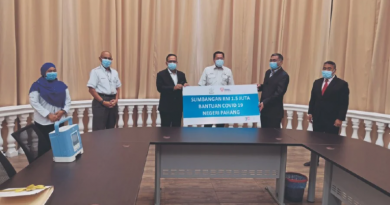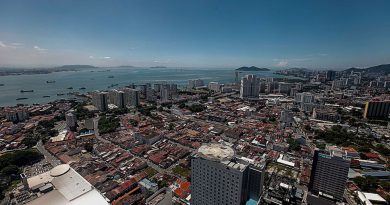Expert: Real test will come during Phases 2 and 3
KUALA LUMPUR: The true test of whether the National Immunisation Programme will be a success will come during Phases 2 and 3, when those from the high-risk category, the elderly and those above age 18 receive the vaccine.
Epidemiologist Datuk Dr Awang Bulgiba Awang Mahmud said Phase 1 was expected to go smoothly as it mostly involved healthcare and security personnel.
“Phases 2 and 3 will provide the real test. There are a few things that can prove to be daunting.”
He said this was because the groups that would be prioritised for vaccination had yet to be made clear.
Dr Awang Bulgiba, who is also head of the Independent Covid-19 Vaccination Advisory Committee under the Science, Technology and Innovation Ministry, said the committee had submitted a risk assessment tool to the government to determine the groups that needed to be given priority.
He said storage vaccine doses was a logistic concern.
“It requires special storage facilities and this needs to be carefully planned. The ministry has engaged data scientists and the Academy of Sciences Malaysia to help with distribution planning. However, storage at vaccination centres will be the responsibility of the Health Ministry.”
He said this was crucial because failure to maintain the right temperature due to electricity supply problems and lack of suitable freezers could affect the efficacy and safety of the vaccine.
He said it was best to be prepared as glitches, delays and setbacks could occur.
“Issues range from insufficient contingency planning, inadequate training of staff and inadequate risk assessment to logistic delays in delivery of vaccines, syringes and personal protective equipment.
“Other problems include inadequate number of staff to register, administer and monitor the vaccines, lack of clarity on the immunisation schedule and logistic difficulties in rural areas.”
He said there could also be system issues like the vaccination database crashing and poor network access.
“This could cause at-risk persons to be missed or not contacted, and failure to track vaccines.”
He said there might also be issues related to vaccination centres being too small for vaccination to be conducted with proper physical distancing or adherence to standard operating procedures.
“We cannot afford to have infections at vaccination centres. Physical distancing, mask wearing and SOP must be followed.
“Large community halls and indoor stadiums with ample parking should be used. Vaccination centres that operate for 24 hours, seven days a week should be considered for densely populated areas to reduce congestion and speed up vaccination.”
He said the programme’s communication strategy must be on point to build confidence in the NIP and counter misinformation propagated by anti-vaxxers.
“There is also the possibility of virus mutations that could reduce the effectiveness of the vaccine and unexpected side effects, especially long-term ones. All this has to be monitored with serological tests and genomic surveys.”
Dr Awang Bulgiba said as healthcare personnel were already stretched thin, staff from other agencies or volunteers could be roped in to help at vaccination centres with registration, reception and directing people.
Epidemiologist Dr Malina Osman reiterated the importance of lowering the risk of infection and outbreaks through vaccination.
“This pandemic has been going on for more than a year. It has disrupted a large part of our lives. There are some 113 million reported cases and 2.45 million deaths worldwide.
“We need the vaccines for protection and reducing the risk of infection, complications and deaths.
“These indirectly will reduce the cost of treatment, ICUs, contact tracings, screening tests, human resources and others.
“More than 200 million are being vaccinated and there are no deaths related to vaccines. Therefore, the vaccines have proven to be safe and effective. This is our solution to end this pandemic and return us to normalcy.”
Source: NST




